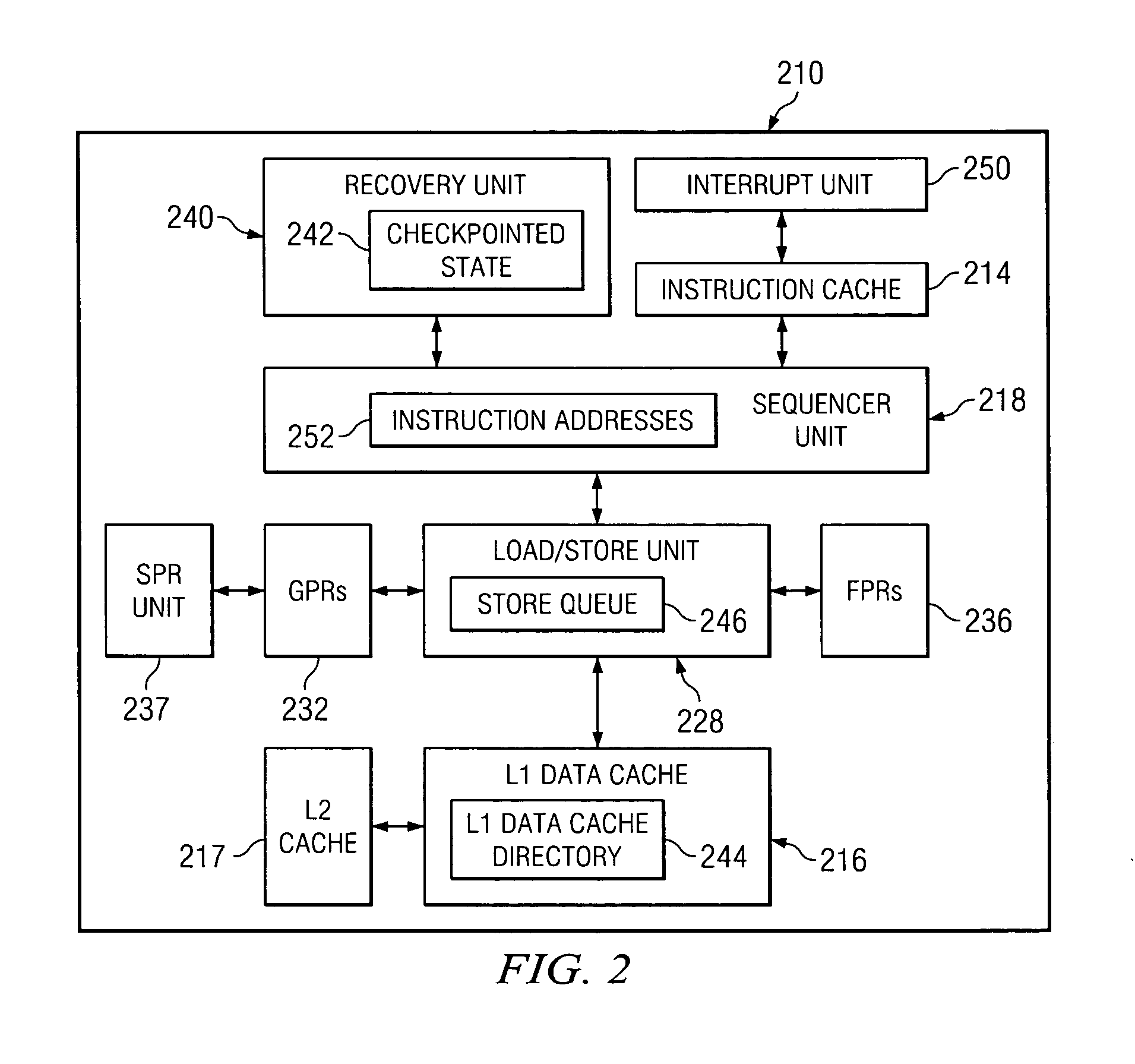Mini-refresh processor recovery as bug workaround method using existing recovery hardware
a technology of recovery hardware and micro-refresh processor, applied in the field of data processing system, can solve the problems of not all bugs are easy to work around, failure to work around, corrupted architected state, etc., and achieve the effect of optimizing (reducing) performance impact and enabling power saving states throughout the processor
- Summary
- Abstract
- Description
- Claims
- Application Information
AI Technical Summary
Benefits of technology
Problems solved by technology
Method used
Image
Examples
Embodiment Construction
[0016]FIG. 1 is a block diagram of a processor 110 system for processing information according to the preferred embodiment. In the preferred embodiment, processor 110 is a single integrated circuit superscalar microprocessor. Accordingly, as discussed further herein below, processor 110 includes various units, registers, buffers, memories, and other sections, all of which are formed by integrated circuitry. Also, in the preferred embodiment, processor 110 operates according to reduced instruction set computer (“RISC”) techniques. As shown in FIG. 1, a system bus 111 is connected to a bus interface unit (“BIU”) 112 of processor 110. BIU 112 controls the transfer of information between processor 110 and system bus 111.
[0017] BIU 112 is connected to an instruction cache 114 and to a data cache 116 of processor 110. Instruction cache 114 outputs instructions to a sequencer unit 118. In response to such instructions from instruction cache 114, sequencer unit 118 selectively outputs inst...
PUM
 Login to View More
Login to View More Abstract
Description
Claims
Application Information
 Login to View More
Login to View More - R&D
- Intellectual Property
- Life Sciences
- Materials
- Tech Scout
- Unparalleled Data Quality
- Higher Quality Content
- 60% Fewer Hallucinations
Browse by: Latest US Patents, China's latest patents, Technical Efficacy Thesaurus, Application Domain, Technology Topic, Popular Technical Reports.
© 2025 PatSnap. All rights reserved.Legal|Privacy policy|Modern Slavery Act Transparency Statement|Sitemap|About US| Contact US: help@patsnap.com



